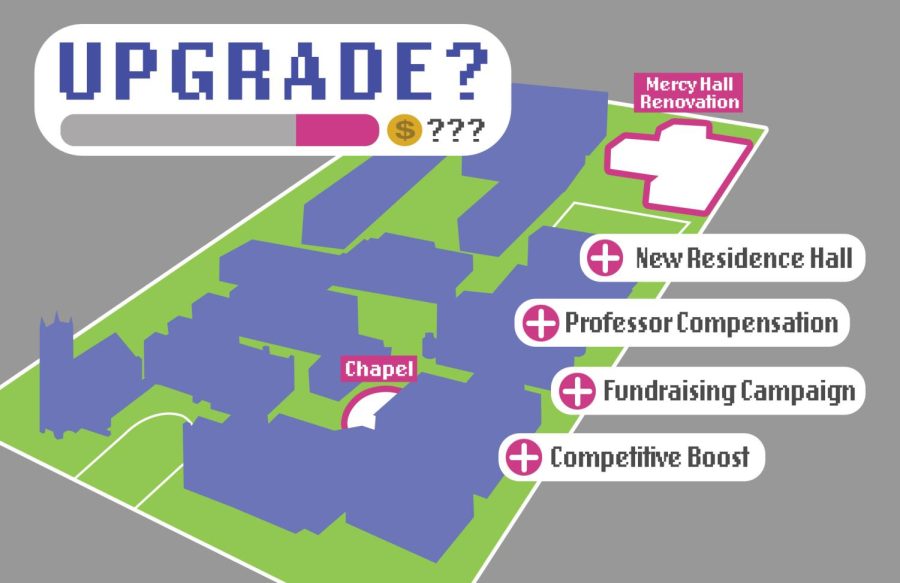EDITORIAL: Campus renovation is good, but we need better communication
January 27, 2023
Father Daffron has announced plans to make Loyola a “go-to place” for workers in the region. Included in these plans is the construction of a new, massive 600-bed residence hall on campus. This will be funded through a complex multi-stage fundraising campaign, planned to raise a staggering $150 million dollars. This came as great news for the students, seeing this as some much needed expansion to the relatively miniscule Loyola campus.
While not only adding much needed amenities to the Loyola campus, this also is a sign to the students that the leadership of the school genuinely cares about them, a feeling which cultivates both approval of the direction the school is going in and appreciation for the school’s leadership. Months later, the situation has changed considerably, and the expansion plans that once cultivated optimism and appreciation now cultivates confusion and concern.
Look down from the 6th floor of Monroe Hall, and you’ll have a good view of the construction site on campus. Unlike the construction you see going on at Tulane, there are no workers, no cranes, and no visible progress whatsoever. Rather, there are just a few measly support beams and a field that has laid dormant so long that the grass has begun to grow back.
This is just one of the university’s recent endeavors to renovate and improve the facilities on campus, and considering the state of the current construction project, many have doubts about how well future initiatives will be implemented.
The new dormitory, the next planned construction project on campus, can be concerning to students when you consider how the timeline of the chapel construction, which is already underway, appears behind schedule.
With this being said, transparency and communication are key. The timeline and progress of this next project must be communicated with the students better than the chapel construction has been. Most of the harsh responses from students following the chapel construction announcement could have been avoided with better, more open communication that prioritized how the project would benefit students and not just the university. The success of Loyola is tied to student satisfaction, and vice versa. We can get behind construction on our campus. We can deal with losing parking spaces and green spaces to accommodate it. We just want to know what the heck is going on.








